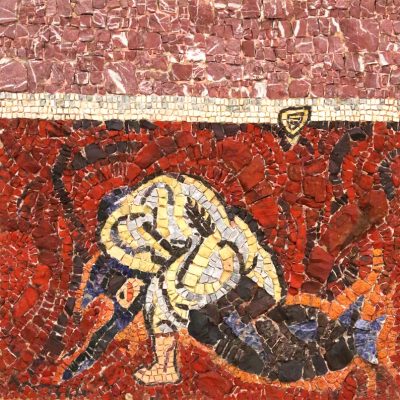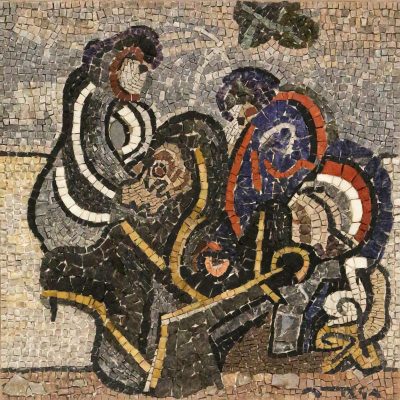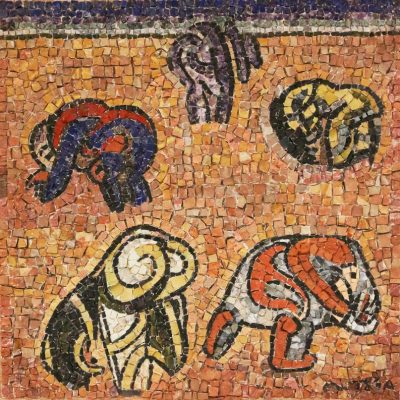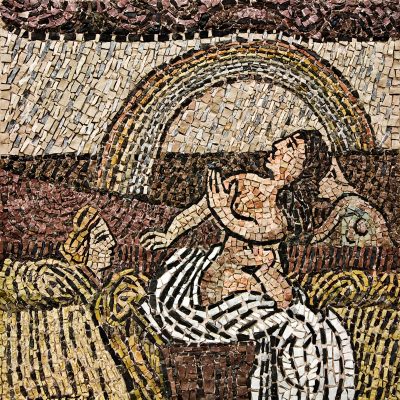An extraordinary series of mosaics created between 1977 and 1978 confirms a particular moment of Josè Ortega’s production (Arroba de los Montes 1921 – Paris 1990), when, as a consequence of a meeting with Giulio Bargellini, mosaic lover and Ortega’s patron, the artist wanted to explore the possibilities of this technique creating a brand new series of works in collaboration with the Mosaicists Cooperative of Ravenna.
The experience, unique in the story of the Spanish artist, aimed to verify how a very ancient technique could conjugate itself with the contemporary expressive spirit. The mosaics deal with allegoric and popular subjects, often linked to the rural world to which the artist always paid particular attention, and highlight the use of non-precious materials, avoiding glass or golden pastes from the Byzantine tradition and preferring, instead, natural materials as river pebbles and porphyry, according to a precise expressive choice linked to the research of severe solidity and to the memory of pre-Christian mosaic techniques.
As a mark of the conception and planning path are also exposed the original cardboard from which the mosaics were drawn.






